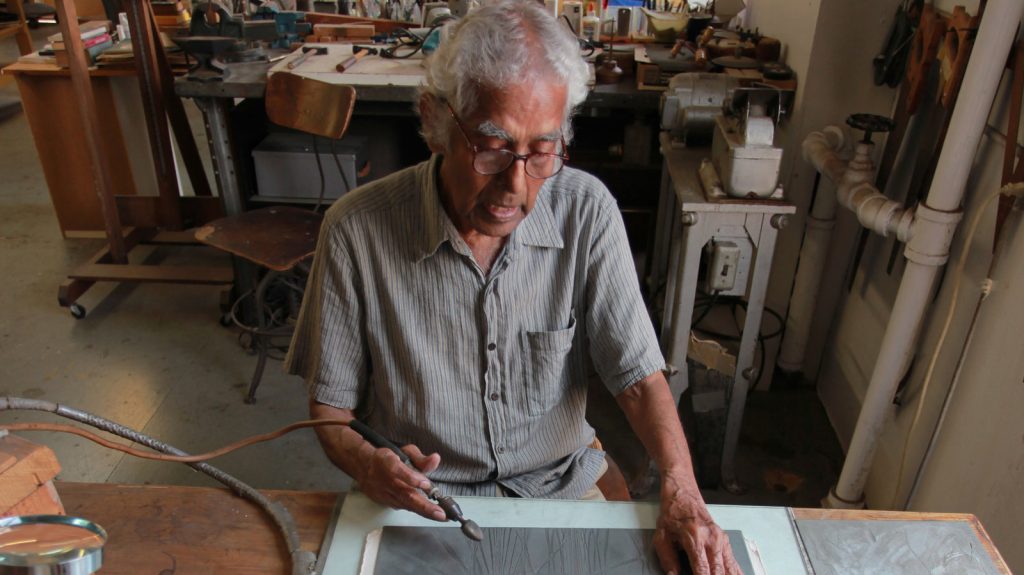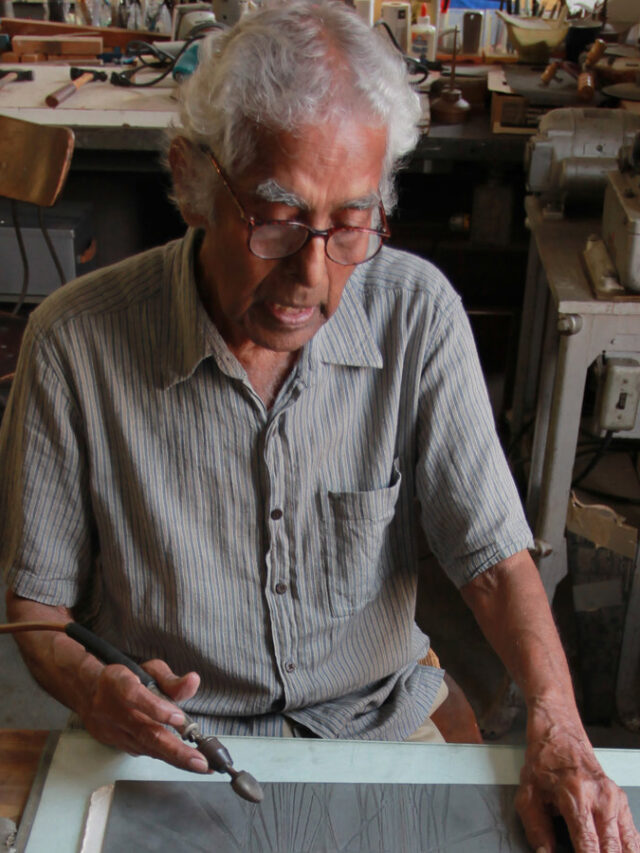Krishna Reddy (b. 15 July 1925) was a printmaker, sculptor, and teacher who was known for dabbling in intaglio and viscosity printmaking techniques. Despite his demise in 2018, the artist continues to be prolific in the Indian printmaking scene, known to some as a master of printmaking. The legend mustn’t be confused with Krishna Reddy Layout, which is a neighborhood in Bangalore. He received the Padma Shri in 1972, for his contribution to printmaking. He was a teacher at heart, having lectured in India, USA, and the UK. Krishna Reddy, aged 93 passed away in 2018 in New York.
Krishna Reddy History
Krishna Reddy studied alongside Nandlal Bose at the Kala Bhavan from 1941 to 1946 earning a degree in fine arts. He soon found himself heading the art section of the Kalakshetra Foundation, where he gravitated towards sculpture and painting. To pursue his newfound passion, he moved to London in 1949. He enrolled at Slade School of Fine Arts, studying sculpture with Henry Moore. By 1950, he moved to Paris studying sculpture and engraving under the tutelage of Ossip Zadkine and Stanley William Hayter respectively.
Krishna Reddy Artist Style
Abstract prints with delicate grid-like patterns published on plates with complex texturations are the hallmark of Krishna Reddy artist artworks. His introduction of several complex colors into prints carries a thoughtful attention to the countless mysteries of nature. During the 1950s, he began working on a series of prints which were constructed using burins and scrapers, and eventually took the form of sculptures. He worked the plate by gouging and excavating the metal. He first primarily used hand tools, but eventually he also started using machine tools.
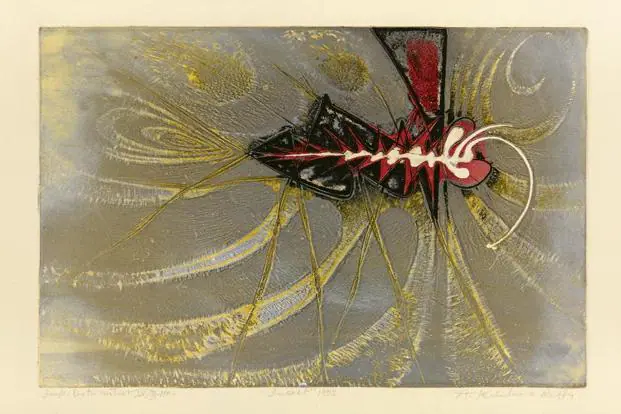
Reddy had a key role in creating a printing technique known as viscosity printing while he was employed at Atelier 17. This technique used the viscosity and tackiness of the inks to create multicolored prints from a single printing matrix. This method of creating color prints from a single plate with variable levels, employing viscosity-varying colors, and applying them with varying degrees of softer rollers was a technological innovation. A single printing plate appeared to have several layers of depth, almost like a sculpture unto itself. His plates resembled exquisitely carved reliefs.
Demonstrators and Demonstrations (1968)
During the 1968 French civil unrest, Krishna Reddy printmaker concocted an intaglio print titled ‘Demonstrators’ and a pair of bronze sculptures titled ‘Demonstrations,’ which quickly garnered him fame. These art pieces portray faceless figures with their arms raised up. The series of figures in both print and sculpture are attached by their sides connoting solidarity among people. While it is undoubtedly inspired by the Parisian protestors, one can see the remnants of the ‘Quit India Movement’, an event that Krishna Reddy experienced for himself.
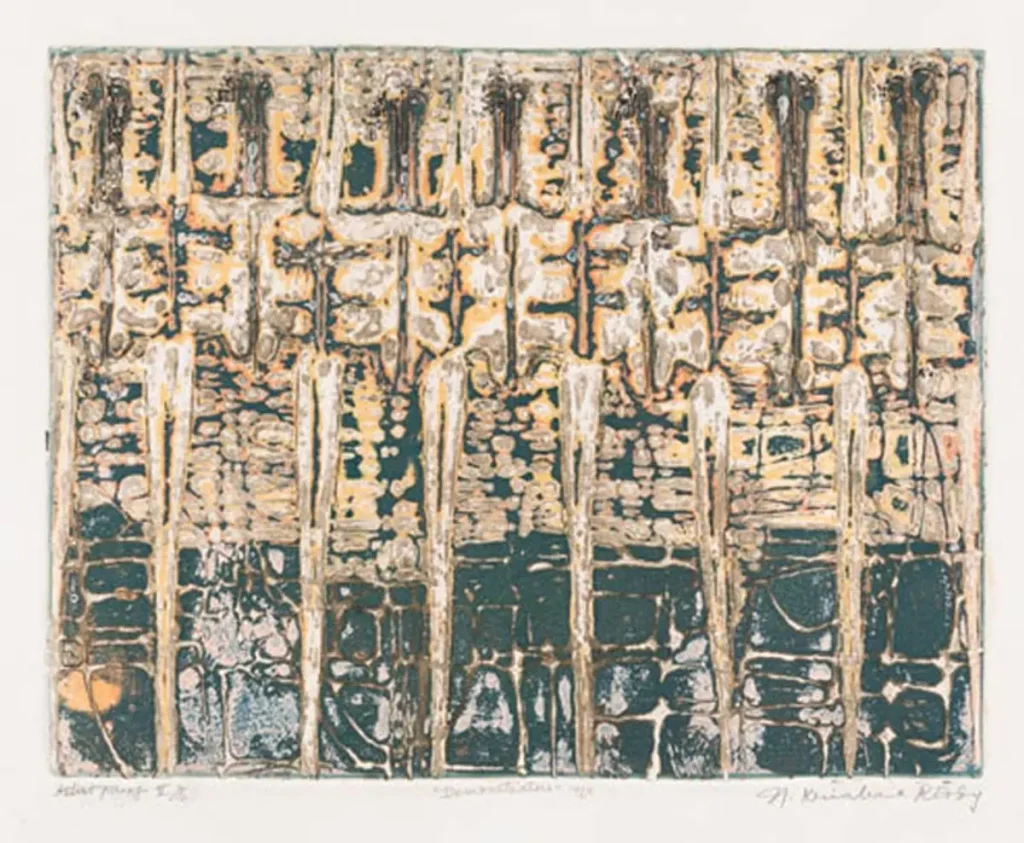
Clown Forming (1981)
Krishna Reddy artist left Paris in 1976 to head the Department of Graphics and Printmaking at New York University. After creating ‘Demonstrators’, he was interested in portraying the human figure. A 1978 trip to a local circus encouraged him to concentrate on clowns. ‘Clown Forming’ presents an abstract picture of a performer enclosed by what appears to be a scaffold. The ring is represented by a beautiful pattern of concentric ovals, and spectators see the clown floating in space and defying gravity as though they are looking down from above.
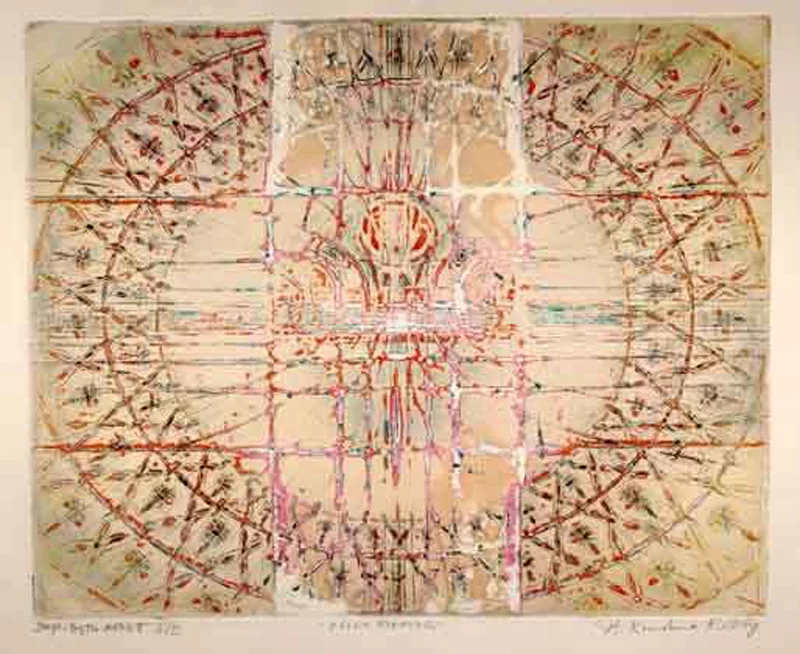
Image Courtesy – The New York Times
Three legends of printmaking, and a month that celebrates them


